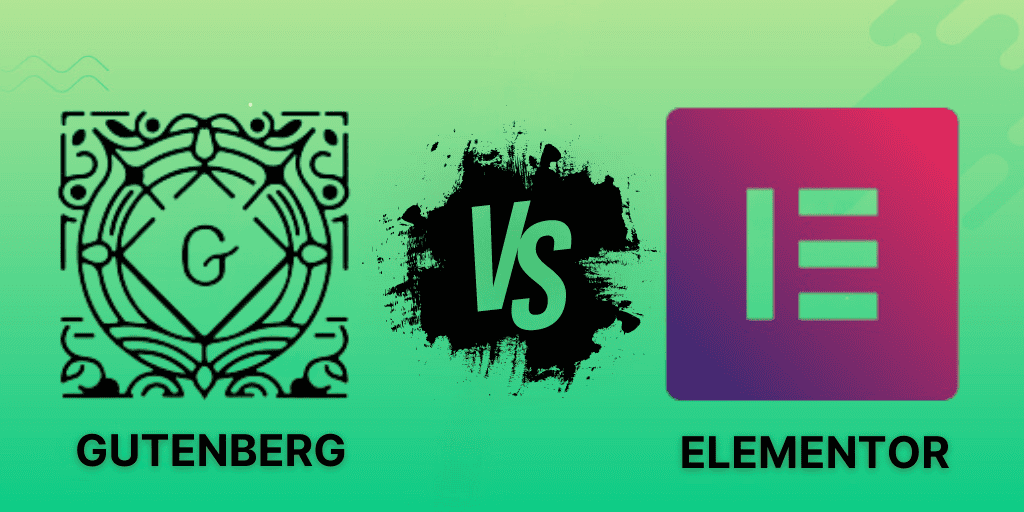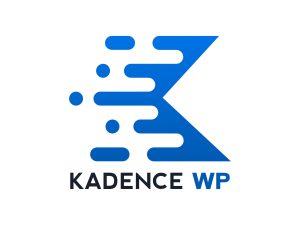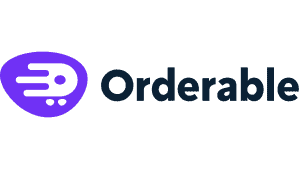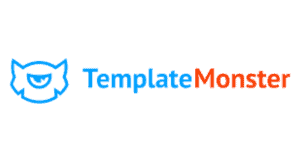Introduction
A. Brief Overview of Gutenberg and Elementor
Gutenberg and Elementor are two of the most popular page builders available for WordPress, each catering to different needs and preferences of website creators.
Gutenberg is the default block editor for WordPress, introduced in WordPress 5.0. It revolutionized content creation by replacing the classic editor with a block-based approach, allowing users to build pages and posts with various content blocks. These blocks can be easily rearranged, customized, and extended with additional plugins, providing a modular and flexible editing experience.
Elementor, on the other hand, is a powerful third-party page builder plugin known for its intuitive drag-and-drop interface. Launched in 2016, Elementor quickly gained popularity due to its ease of use, extensive design capabilities, and a vast library of pre-designed templates and widgets. It offers both a free version and a feature-rich Pro version, making it suitable for both beginners and advanced users.
B. Purpose of the Comparison
The purpose of this comparison is to provide a detailed analysis of the features offered by both Gutenberg and Elementor, in their free and paid versions. By understanding the strengths and limitations of each page builder, users can make an informed decision on which tool best suits their specific needs for website design and content creation.
C. Importance of Choosing the Right Page Builder
Choosing the right page builder is crucial for creating a visually appealing, functional, and user-friendly website. The right tool can significantly enhance the design process, improve site performance, and provide the necessary flexibility to adapt to future changes. As the backbone of your website's content creation, the page builder you choose will impact the overall user experience, site maintenance, and scalability.
Gutenberg and Elementor each offer unique features and advantages, catering to different types of users. Whether you are a blogger, a small business owner, or a professional web designer, understanding the key differences between Gutenberg and Elementor will help you select the most appropriate tool for your website's needs.
Understanding Gutenberg
A. What is Gutenberg?
Gutenberg is the default block editor for WordPress, introduced in WordPress 5.0 to replace the classic editor. Named after Johannes Gutenberg, the inventor of the printing press, this editor revolutionized content creation by enabling users to build pages and posts using a block-based approach. Each piece of content, such as text, images, videos, and buttons, is treated as a separate block, which can be easily added, arranged, and customized. This modular system provides a more intuitive and flexible editing experience compared to the traditional single-text editor.
B. Core Features of Gutenberg
- Block-Based Editing:
- The cornerstone of Gutenberg is its block-based system. Users can select from a wide range of blocks to add different types of content, including paragraphs, headings, images, galleries, videos, lists, and more. Each block can be independently styled and configured, offering granular control over content layout and design.
- Built-In WordPress Integration:
- As the native editor for WordPress, Gutenberg is seamlessly integrated into the platform. This ensures compatibility with the WordPress core, themes, and plugins. Users can rely on continuous updates and improvements from the WordPress development team, making it a stable and reliable choice.
- Performance and Speed:
- Gutenberg is designed to be lightweight and efficient, leveraging the latest web technologies to deliver fast performance. The block editor minimizes the need for additional plugins, reducing the risk of conflicts and bloat, and contributing to a faster and more responsive website.
C. Free Version Features
- Basic Block Library:
- The free version of Gutenberg includes a comprehensive library of basic blocks that cover most content creation needs. This includes text blocks, media blocks, layout blocks, and more. Users can create rich, multimedia content without needing to install additional plugins.
- Responsive Design Options:
- Gutenberg provides tools for creating responsive designs that look great on all devices. Blocks are designed to be mobile-friendly by default, and users can preview and adjust their layouts for different screen sizes.
- Compatibility with WordPress Themes:
- Gutenberg is compatible with most WordPress themes, allowing users to take advantage of their theme's design features while using the block editor. Many themes also offer enhanced support for Gutenberg, providing additional styling and customization options for blocks.
D. Paid Version Features (if applicable)
While Gutenberg itself is free and does not have a paid version, its functionality can be significantly enhanced with premium block plugins and add-ons. Here are some popular options:
- Advanced Block Plugins (e.g., Stackable, Kadence Blocks):
- Premium block plugins extend the capabilities of the Gutenberg editor by adding advanced blocks and features. These plugins offer a wider variety of blocks, including advanced content elements, design options, and integrations with third-party services.
- Enhanced Customization Options:
- Premium add-ons provide greater customization options for blocks, allowing users to create more complex and visually appealing layouts. This includes additional styling controls, animation effects, and advanced layout configurations.
- Premium Support:
- Users who invest in premium block plugins often receive access to dedicated support and regular updates. This ensures that their site remains up-to-date with the latest features and security patches, and they can get help when needed.
Understanding Elementor
A. What is Elementor?
Elementor is a leading third-party page builder plugin for WordPress, known for its intuitive drag-and-drop interface and extensive design capabilities. Launched in 2016, Elementor has quickly become a favorite among web designers and developers for its ease of use, flexibility, and powerful features. With both free and paid versions, Elementor caters to a wide range of users, from beginners looking to create simple pages to advanced professionals crafting complex, dynamic websites.
B. Core Features of Elementor
- Drag-and-Drop Interface:
- Elementor's hallmark feature is its drag-and-drop editor, which allows users to design pages visually without writing any code. Users can simply drag elements (widgets) from the sidebar and drop them onto the page, arranging and customizing them in real-time.
- Template Library:
- Elementor offers a vast library of pre-designed templates and blocks that users can import and customize. This library includes templates for various types of pages, such as homepages, landing pages, contact pages, and more, helping users kickstart their design process.
- Third-Party Integrations:
- Elementor seamlessly integrates with a wide range of third-party tools and services, including popular marketing platforms, form plugins, and social media widgets. This integration capability enhances the functionality and versatility of websites built with Elementor.
C. Free Version Features
- Basic Widget Library:
- The free version of Elementor includes a robust selection of basic widgets, such as text, images, videos, buttons, and more. These widgets cover essential content needs, allowing users to create functional and attractive web pages.
- Mobile Editing:
- Elementor provides tools for responsive design, enabling users to customize their pages for different devices. The mobile editing feature allows users to adjust settings specifically for mobile and tablet views, ensuring a consistent user experience across all screen sizes.
- Pre-Designed Templates:
- Even in its free version, Elementor offers a variety of pre-designed templates that users can import and customize. These templates serve as a starting point, saving time and effort in the design process.
D. Paid Version Features
- Advanced Widgets and Templates:
- Elementor Pro expands the widget library with advanced elements such as forms, sliders, pricing tables, and more. It also includes a broader selection of premium templates, providing more options for professional-grade designs.
- Theme Builder:
- One of the standout features of Elementor Pro is the Theme Builder, which allows users to design and customize every part of their website, including headers, footers, single posts, and archive pages. This feature provides unparalleled control over the site's appearance and layout.
- WooCommerce Builder:
- Elementor Pro includes specialized widgets and templates for WooCommerce, enabling users to create custom e-commerce pages. This includes product pages, shop pages, and checkout pages, enhancing the shopping experience and boosting conversions.
- Premium Support and Updates:
- Elementor Pro users receive access to premium support, ensuring that they can get help with any issues or questions. Additionally, Pro users benefit from regular updates that include new features, improvements, and security enhancements.
Detailed Comparison of Free Versions
A. Gutenberg vs Elementor: Block/Widget Library
Gutenberg:
- Block Library: Gutenberg offers a comprehensive library of basic blocks, covering most content creation needs. These blocks include paragraphs, headings, images, galleries, lists, quotes, and more.
- Customization: While Gutenberg blocks provide essential customization options, they are generally more limited in design flexibility compared to Elementor’s widgets. Users can add custom CSS and utilize themes to enhance the blocks' appearance.
Elementor:
- Widget Library: Elementor’s free version includes a wide range of widgets such as text, images, videos, buttons, and basic galleries. These widgets are designed to be highly customizable with a user-friendly interface.
- Advanced Customization: Elementor’s widgets offer more extensive customization options out-of-the-box, allowing users to tweak colors, fonts, spacing, and other design elements without needing additional CSS.
B. User Interface and Ease of Use
Gutenberg:
- User Interface: Gutenberg’s interface is integrated directly into the WordPress editor, providing a familiar environment for WordPress users. The block-based approach is straightforward, but it may take some time for users accustomed to the classic editor to adjust.
- Ease of Use: Gutenberg is designed to be intuitive, with a focus on simplicity. However, the learning curve can be steeper for users who need to perform more complex design tasks due to limited built-in styling options.
Elementor:
- User Interface: Elementor offers a highly intuitive drag-and-drop interface, allowing users to see changes in real-time as they design their pages. The sidebar panel provides easy access to widgets and customization options.
- Ease of Use: Elementor is generally praised for its user-friendliness, making it easy for beginners to create sophisticated designs without any coding knowledge. The visual nature of the editor reduces the learning curve significantly.
C. Design Flexibility and Customization
Gutenberg:
- Design Flexibility: Gutenberg provides basic design flexibility through block settings and theme support. Users can utilize additional CSS classes for more advanced customization, but this requires some coding knowledge.
- Customization Options: The customization options in Gutenberg are more limited compared to Elementor. Users rely heavily on their theme’s capabilities and additional plugins to achieve advanced designs.
Elementor:
- Design Flexibility: Elementor excels in design flexibility, offering a wide range of customization options for each widget. Users can adjust every aspect of their design, including margins, padding, colors, and typography.
- Customization Options: With Elementor, users can create complex layouts and designs without any coding. The built-in design tools and pre-designed templates make it easy to achieve a professional look.
D. Performance and Speed
Gutenberg:
- Performance: As part of the WordPress core, Gutenberg is optimized for performance and speed. The block editor is lightweight, minimizing additional load times.
- Speed: Gutenberg’s performance benefits from its integration into WordPress, ensuring quick loading times and a smooth editing experience.
Elementor:
- Performance: Elementor is a powerful plugin, but it can be resource-intensive, potentially affecting site performance if not optimized properly. Users need to be mindful of the number of widgets and add-ons used.
- Speed: While Elementor offers many features, these can sometimes slow down the site, especially on shared hosting environments. Proper optimization and caching are essential to maintain speed.
E. Integration with Other Plugins and Themes
Gutenberg:
- Integration with Plugins: Gutenberg is designed to work seamlessly with most WordPress plugins. Many plugin developers have created blocks specifically for Gutenberg, enhancing its functionality.
- Compatibility with Themes: Gutenberg is compatible with most WordPress themes, and many modern themes are designed with Gutenberg in mind, offering enhanced block styling and layouts.
Elementor:
- Integration with Plugins: Elementor integrates well with a variety of third-party plugins, including popular marketing, SEO, and form plugins. This integration extends the functionality of Elementor-built websites.
- Compatibility with Themes: Elementor works with almost any WordPress theme, but for the best experience, users are encouraged to use Elementor-compatible themes or the official Hello theme, designed for full compatibility.
Detailed Comparison of Paid Versions
A. Advanced Features and Functionalities
Gutenberg (with Premium Block Plugins):
- Advanced Block Plugins: Premium block plugins such as Stackable, Kadence Blocks, and Ultimate Addons for Gutenberg enhance the editor's capabilities by adding advanced blocks and features. These plugins offer a wider variety of blocks, including advanced content elements, design options, and integrations with third-party services.
- Advanced Customization: Premium plugins provide greater customization options for each block, allowing users to create more complex and visually appealing layouts. This includes additional styling controls, animation effects, and advanced layout configurations.
- Integration and Extensibility: Premium block plugins are designed to integrate seamlessly with the Gutenberg editor and other WordPress plugins, ensuring smooth functionality and extensibility.
Elementor Pro:
- Advanced Widgets and Templates: Elementor Pro significantly expands the widget library with advanced elements such as forms, sliders, pricing tables, media carousels, and more. The Pro version also includes a broader selection of premium templates, providing more options for professional-grade designs.
- Theme Builder: Elementor Pro’s Theme Builder allows users to design and customize every part of their website, including headers, footers, single posts, and archive pages. This feature offers unparalleled control over the site's appearance and layout.
- WooCommerce Builder: The WooCommerce Builder in Elementor Pro enables users to create custom e-commerce pages, including product pages, shop pages, and checkout pages. This enhances the shopping experience and boosts conversions with tailored design elements.
- Dynamic Content: Elementor Pro allows for dynamic content integration, enabling users to create custom fields, post types, and other dynamic elements that can be used throughout the site for personalized user experiences.
B. Customization and Design Capabilities
Gutenberg (with Premium Block Plugins):
- Customization: Premium block plugins offer extensive customization options, including advanced styling controls, custom CSS capabilities, and a variety of block-specific settings. This allows users to create highly customized and unique designs.
- Design Capabilities: While Gutenberg with premium plugins can achieve sophisticated designs, it often requires a combination of multiple plugins and some coding knowledge to match the design flexibility offered by Elementor Pro.
Elementor Pro:
- Customization: Elementor Pro provides a comprehensive suite of design tools that allow users to customize every aspect of their website’s appearance. This includes extensive styling options, advanced motion effects, and global settings that ensure design consistency across the site.
- Design Capabilities: With Elementor Pro, users can create complex and highly interactive designs without any coding. The visual editor, combined with powerful design tools, makes it easy to build professional-quality websites.
C. E-Commerce Integration (WooCommerce)
Gutenberg (with Premium Block Plugins):
- WooCommerce Blocks: Gutenberg can be enhanced with WooCommerce-specific blocks available through plugins like WooCommerce Blocks and premium block plugins. These blocks allow for basic customization of product pages, shop layouts, and other e-commerce elements.
- Customization: While Gutenberg allows for customization of WooCommerce pages, achieving advanced designs often requires additional plugins and custom coding, making it less straightforward compared to Elementor Pro.
Elementor Pro:
- WooCommerce Widgets: Elementor Pro offers dedicated WooCommerce widgets that enable users to design custom product pages, shop pages, and other e-commerce-related elements. This includes product grids, add-to-cart buttons, and custom checkout pages.
- Customization: The WooCommerce Builder in Elementor Pro provides extensive customization options, allowing users to create tailored e-commerce experiences. Users can easily style and configure WooCommerce elements to match their brand and enhance user experience.
D. Support and Community
Gutenberg (with Premium Block Plugins):
- Support: Support for Gutenberg typically comes from the WordPress community and the developers of premium block plugins. Premium plugins often include dedicated support channels, including email support, documentation, and forums.
- Community: Gutenberg benefits from a large and active community of users and developers who contribute to its ongoing development and provide support through forums, blogs, and social media groups.
Elementor Pro:
- Support: Elementor Pro users receive access to premium support, which includes priority email support, a comprehensive knowledge base, tutorials, and community forums. This ensures that users can get help with any issues or questions they may encounter.
- Community: Elementor has a robust and engaged community of users and developers. The Elementor community provides support through forums, Facebook groups, meetups, and an extensive library of online resources and tutorials.
E. Pricing
Gutenberg (with Premium Block Plugins):
- Cost: Gutenberg itself is free, but the cost of premium block plugins can vary. Prices for individual plugins typically range from $30 to $100 per year, depending on the features and support offered. Some plugin bundles offer more cost-effective solutions for users needing multiple plugins.
- Value: The value of using Gutenberg with premium plugins lies in its modular approach, allowing users to choose and pay for only the features they need. This can be a cost-effective solution for users who require specific advanced functionalities.
Elementor Pro:
- Cost: Elementor Pro offers several pricing plans, starting at $49 per year for a single site license, $99 per year for three sites, and $199 per year for up to 25 sites. There are also higher-tier plans for agencies and developers who manage multiple sites.
- Value: Elementor Pro provides a comprehensive set of features and tools in a single package, offering excellent value for users who need a powerful and versatile page builder. The all-in-one approach simplifies the design process and reduces the need for additional plugins.
Pros and Cons
A. Pros and Cons of Gutenberg
Pros:
- Native WordPress Integration: As the default editor for WordPress, Gutenberg is seamlessly integrated into the WordPress core, ensuring compatibility and stability.
- Performance and Speed: Gutenberg is lightweight and optimized for performance, resulting in faster load times and a smoother editing experience.
- Flexibility with Plugins: The block-based system can be extended with various free and premium block plugins, providing a modular approach to adding functionality.
- Free to Use: Gutenberg is free and does not require any additional costs for basic features.
- Responsive Design: Blocks are designed to be mobile-friendly, ensuring that content looks great on all devices.
Cons:
- Learning Curve: Users accustomed to the classic editor may find the block-based approach unfamiliar and need time to adjust.
- Limited Advanced Features: Out-of-the-box, Gutenberg offers fewer advanced design and customization options compared to dedicated page builders like Elementor.
- Reliance on Additional Plugins: Achieving advanced functionalities often requires additional block plugins, which can complicate the setup and maintenance process.
- Basic Styling Options: The default styling options for blocks are limited, often requiring custom CSS or third-party plugins for more sophisticated designs.
B. Pros and Cons of Elementor
Pros:
- Intuitive Drag-and-Drop Interface: Elementor's visual editor is user-friendly, making it easy for users of all skill levels to create complex designs without coding.
- Comprehensive Widget Library: Even the free version includes a robust set of widgets, with the Pro version offering even more advanced elements.
- Advanced Customization: Elementor Pro provides extensive design tools, including theme and WooCommerce builders, allowing for complete control over site appearance.
- Pre-Designed Templates: A vast library of templates and blocks helps users kickstart their design process, saving time and effort.
- Active Community and Support: Elementor has a large and engaged user base, along with premium support for Pro users, ensuring ample resources and assistance.
Cons:
- Performance Concerns: Elementor can be resource-intensive, potentially slowing down the site if not optimized properly. Users need to be mindful of widget usage and optimize their sites for better performance.
- Cost of Pro Version: While the free version is robust, many of Elementor’s most powerful features are locked behind the Pro version, which requires a paid subscription.
- Complexity for Beginners: Although user-friendly, the sheer number of options and features can be overwhelming for beginners, necessitating a learning curve to fully leverage its capabilities.
- Potential for Bloat: Overuse of widgets and templates can lead to code bloat, affecting site performance and maintenance.
Use Cases and Recommendations
A. Best Use Cases for Gutenberg
- Blogging and Content-Focused Websites:
- Gutenberg is ideal for bloggers and content creators who prioritize writing and need a straightforward way to add and arrange different types of content. The block editor is perfect for creating rich media posts with images, videos, galleries, and embeds.
- Basic Business Websites:
- Small business owners looking to create a simple, yet professional website can benefit from Gutenberg's integration with WordPress themes. Basic customization is straightforward, and additional functionalities can be added through plugins.
- Sites Needing Fast Performance:
- Sites that prioritize performance and speed will benefit from Gutenberg’s lightweight nature. The block editor minimizes additional load times, making it suitable for users who want a fast, responsive website without extensive customization.
- Users Who Prefer Minimal Plugins:
- Gutenberg’s native integration means fewer compatibility issues and a lower reliance on multiple third-party plugins. This is ideal for users who prefer a clean, streamlined setup with minimal maintenance.
B. Best Use Cases for Elementor
- Professional and Business Websites:
- Elementor is perfect for businesses and professionals who need a highly customizable, visually appealing website. The drag-and-drop interface allows for detailed design work, making it suitable for creating custom layouts and branding.
- E-Commerce Stores:
- With its WooCommerce Builder, Elementor Pro is a powerful tool for building e-commerce websites. Users can create custom product pages, shop layouts, and checkout processes that enhance the shopping experience and boost conversions.
- Landing Pages and Marketing Sites:
- Marketers and advertisers will find Elementor’s pre-designed templates and advanced widgets ideal for creating high-conversion landing pages. The tool’s design flexibility helps in crafting compelling calls to action and engaging user experiences.
- Portfolio and Creative Websites:
- Creative professionals like designers, photographers, and artists can leverage Elementor’s extensive design capabilities to showcase their work. The ability to create unique, visually stunning layouts makes it an excellent choice for portfolio websites.
C. Recommendations Based on User Needs
- Ease of Use:
- Recommendation: Choose Elementor if you prioritize ease of use and a visual editing experience. The drag-and-drop interface is intuitive and reduces the learning curve for non-technical users.
- Advanced Customization:
- Recommendation: For users needing advanced design capabilities and customization, Elementor Pro is the better choice. Its comprehensive set of tools and widgets allows for more sophisticated designs.
- Budget Considerations:
- Recommendation: If budget is a primary concern, Gutenberg with free or low-cost block plugins is a cost-effective solution. It provides essential features without the need for a premium subscription.
- Performance and Speed:
- Recommendation: For websites where performance and speed are critical, such as news sites or performance-focused blogs, Gutenberg is a more lightweight option that ensures faster load times.
- Full Site Customization:
- Recommendation: Users who need full control over every aspect of their website’s design, including headers, footers, and dynamic content, should opt for Elementor Pro. The Theme Builder feature is unparalleled in providing site-wide customization.
Conclusion
A. Summary of Key Points
In the comparison between Gutenberg and Elementor, both page builders offer unique features and benefits that cater to different types of users and website needs.
- Gutenberg:
- Strengths: Integrated into WordPress core, lightweight, free to use, and ideal for content-focused websites.
- Limitations: Fewer advanced design options, requires additional plugins for extended functionality, and has a steeper learning curve for complex customizations.
- Elementor:
- Strengths: Intuitive drag-and-drop interface, extensive design capabilities, advanced widgets and templates, and superior customization options.
- Limitations: Can be resource-intensive, potentially affecting site performance, and many of its most powerful features require a Pro subscription.
B. Final Thoughts
Choosing between Gutenberg and Elementor depends largely on your specific needs and goals for your website. Gutenberg is an excellent choice for those who prefer a straightforward, integrated solution with solid performance and speed. It’s particularly suitable for bloggers, content creators, and small business websites that don’t require extensive design customizations.
Elementor, on the other hand, is ideal for users who need a highly customizable, visually appealing website with advanced design features. It’s perfect for businesses, marketers, and creative professionals who want to create unique, professional-grade websites without extensive coding knowledge.
C. Encouragement to Choose Based on Specific Needs
Ultimately, the best page builder for you is the one that aligns with your specific requirements and skill level. Consider factors such as ease of use, design flexibility, budget, performance, and the type of website you’re creating. By evaluating these elements, you can make an informed decision that will help you build a website that meets your objectives and provides a great user experience.







